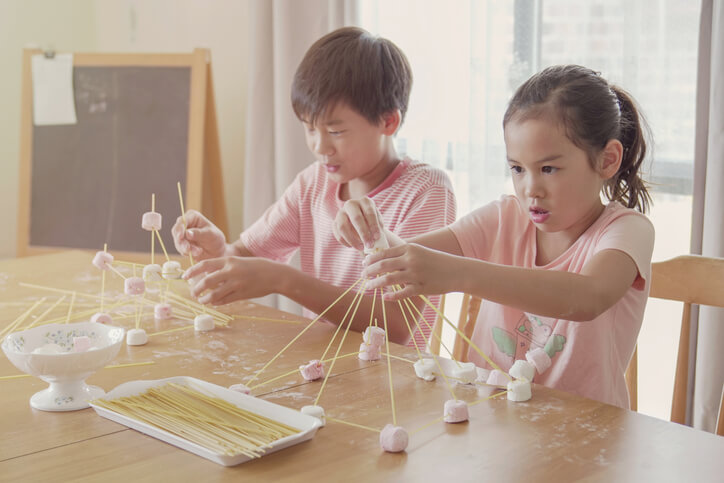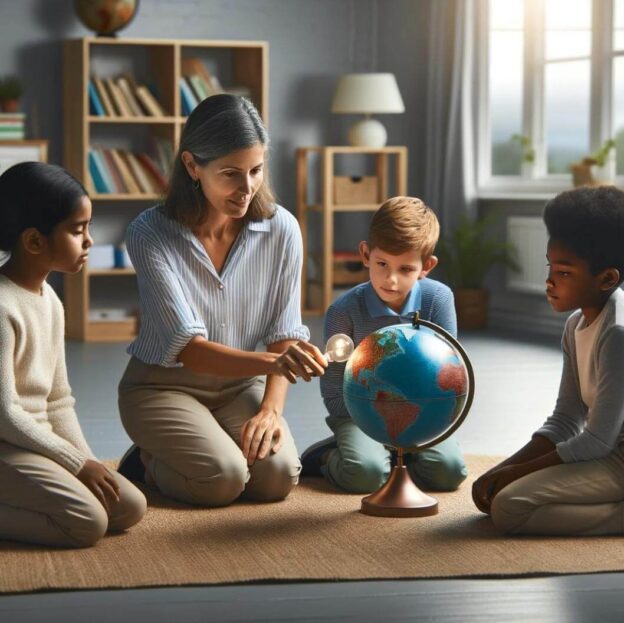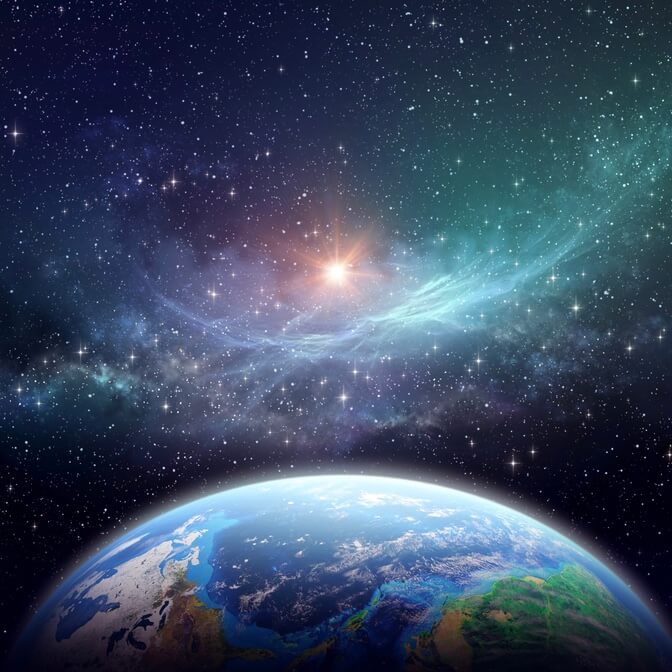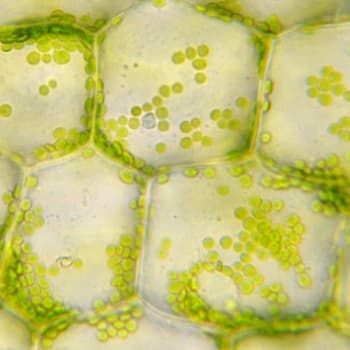Montessori Science Lessons vs. Traditional Ones

If your students aren’t excelling with traditional science classes or if you think they’re not truly grasping the concepts you’re trying to teach, Montessori science lessons could be the trick. In this article, you will learn about the essentials of a Montessori science curriculum, how it’s unique, and how you can implement it.
Table of Contents
- What Is Montessori?
- How Do Montessori Science Lessons Compare to Traditional Science Lessons?
- How to Implement Montessori Science Lessons
- Montessori Science Lessons Create the Best Possible Learning Experience
- Try Montessori Laboratory’s Hands-on Science Lessons for Free
What Is Montessori?
It is a uniquely child-centric educational process that was developed by Dr. Maria Montessori in the early 20th century. The general idea is to have children of many ages and ability levels in the same classroom, learning together through child-led activities. The children choose their activities and essentially administer them on their own.
The ultimate idea behind the Montessori Method is that children learn best when they are interested and actively engaged. It teaches them to be more independent and to take personal responsibility for their learning.
How Do Montessori Science Lessons Compare to Traditional Science Lessons?
While both Montessori science lessons and traditional science lessons have a shared goal – to teach children thoroughly and give them an in-depth understanding of scientific concepts – there are several key ways Montessori science lessons stand apart.
More Child Choice
A traditional science curriculum is very structured. It typically centers around a teacher giving lessons that follow an established progression of topics and concepts for children to learn in a specific order and timeframe.
A Montessori curriculum, on the other hand, gives children more choice over what they learn and when. The teachers, or guides, will give demonstrations to small groups in the class based on their observations of the children, and what scientific topics they think may spark any given child’s interest at the time.
From there, the children have the freedom to work with various science materials and activities that the guide has set out on the classroom shelves. The same would be done in a homeschool environment as well!
For example, when the Mars rover landed, and some students shared about it during their morning circle, a Montessori guide may have chosen to give a small group lesson on our Solar System to those who were interested.
Then, students could branch off to do further research on Mars, make their own models of the solar system, experiment with different ways to launch rockets into the sky … the possibilities are endless.
Children are more engaged because they have the freedom to work on what interests them and dive deep into that topic.
Sensorial Learning
Because traditional science classes have a specific amount of material to cover in a set period of time, they primarily rely on lecture-style lessons. While this might cover information quickly, it doesn’t give children as much of an in-depth understanding because they aren’t experiencing the science for themselves.
For example, you can teach children how certain chemicals interact with each other, or you can have them try the combinations for themselves and see the effects. In the same way that all of us learn better through making a mistake and overcoming it than by being given instructions, children learn better when their education is an experience.
Holistic Grading
Most people are used to traditional grading methods, such as tests and homework assignments. However, there are many factors that can affect those tests – a child’s ability to focus quiety at a desk, test anxiety, not sleeping well the night before, and so on.
For that reason, Montessori education focuses on more holistic ways of observing progress. The focus is on tracking a child’s growth over time rather than comparing them to their peers or to a numeric standard. As a result, children’s progress is measured based on the teacher’s observations of them and their daily work rather than on written exams.
Well-Rounded Learning
Montessori science lessons aim not only to teach specific facts but to educate the whole child in the most thorough, well-rounded way. This could mean using cross-curriculum activities that expand a child’s math skills and scientific knowledge at the same time. Or, it could mean teaching children about neuroscience in a way that helps them build empathy for others.
More Social Interaction
Most traditional classes don’t involve much social interaction between students. In fact, it’s often actively discouraged because the curriculum calls for teaching a lot of specific facts in a short period of time and social interaction can slow that pace.
Montessori science lessons, on the other hand, encourage children to interact with each other as they learn. After all, they’re engaging in the experiments and activities together. Those who understand it quickly can help to teach their classmates. This enhances everyone’s learning experience while also giving children more practiced social skills.
How to Implement Montessori Science Lessons
The beauty of Montessori is that you can integrate it into your science curriculum as thoroughly or as minimally as you like. You can use them in a Montessori classroom, in a homeschool environment … you can even take elements of the philosophy and use them in a traditional science classroom.
For example, set up a variety of activity stations for children to use together. They can each choose which ones they want to try so that small groups are working together at each station. If you’re homeschooling with an older and younger child, have the older child lead the younger child through the experiments.
If you’re not sure of what experiments to prepare, or what materials to set out, seek out pre-developed science lessons that are designed based on the Montessori lessons and philosophy. As is the way in Montessori, these lessons are designed for specific planes of development, but are versatile enough for varying abilities.
Montessori Science Lessons Create the Best Possible Learning Experience
Regardless of your institution or educational background, at the end of the day, every educator wants the same thing: to give their students an in-depth and well-rounded education they can use to be successful adults. In many cases, that starts with steering toward the Montessori approach.
To give this a try in your own classroom, learn more about our Montessori science program for children.
Try Montessori Laboratory’s Hands-on Science Lessons for Free
Are you interested in seeing what Montessori Laboratory’s big-picture lessons, hands-on experiments, and engaging science activities are all about? Check out the free lessons below!
The First Great Lesson
Where did the stars come from? And the Sun? How was our Earth created? And what about the rest of…
Combining and Separating
Why does sand settle to the bottom of the ocean, but salt mixes in? How do people get sea salt out…
How Did Humans Discover Fire?
When did we start using fire? What 3 components does fire need to burn?






Responses